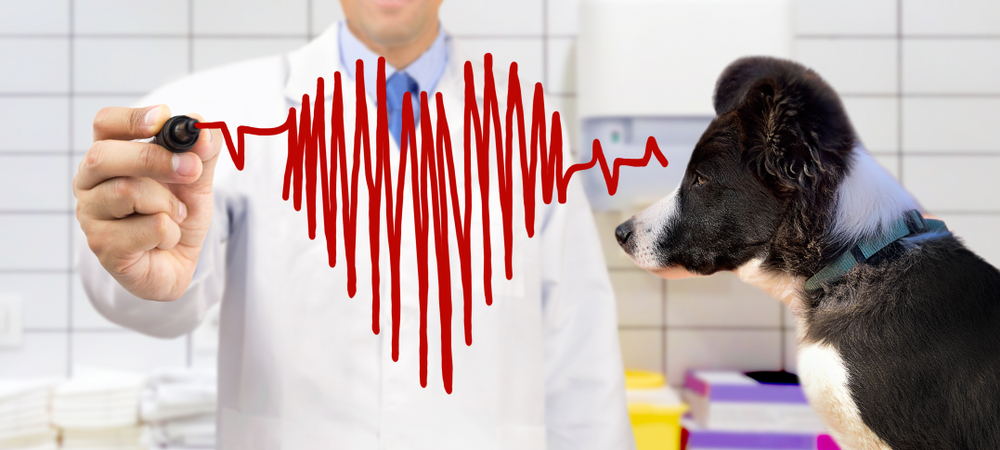What You Need to Know About Veterinary Providers: An Introduction of Diagnostic Tools and Procedures
Veterinary services play an important function in keeping the wellness of animals. Routine examinations can expose surprise health and wellness issues early on. Numerous diagnostic tools and treatments, such as blood examinations and imaging techniques, supply vital insights into an animal's wellness. Understanding these techniques is vital for pet dog proprietors. What certain analysis procedures are most generally made use of, and how can they influence a pet's therapy plan?
Importance of Normal Veterinary Examinations
While several pet dog owners may undervalue the value of regular vet exams, these consultations are important for keeping an animal's overall health. Regular brows through to the veterinarian enable very early detection of possible health issues prior to they rise right into significant problems. Normal examinations often include vaccinations, which are very important for stopping transmittable diseases that can significantly affect a pet dog's well-being. Furthermore, these appointments supply an opportunity for vets to analyze the animal's weight, dental health, and total condition, guaranteeing that the pet dog is thriving. During these sees, family pet owners can additionally receive important guidance on diet, exercise, and preventive care customized to their certain pet dog's demands.
Usual Diagnostic Procedures in Vet Medicine
In veterinary medication, precise diagnosis is important for reliable therapy. Common diagnostic procedures consist of blood testing methods, progressed imaging innovations, and urinalysis, each playing a considerable duty in identifying health and wellness problems. Comprehending these methods boosts the capacity to provide ideal treatment for animal clients.
Blood Evaluating Strategies
Blood screening strategies function as important analysis devices in vet medicine, allowing veterinarians to analyze the wellness of pets precisely. These strategies entail gathering blood samples to evaluate numerous elements, such as red and white blood cells, platelets, and biochemical pens. Common tests consist of full blood counts (CBC), which review general health and wellness and identify infections, and biochemical panels, which analyze organ feature and metabolic status. In addition, serological tests can identify specific illness with antibody discovery. Blood testing is minimally invasive and supplies crucial info that assists in diagnosing problems, checking health standing, and assessing responses to treatments. Generally, these strategies play an important function in guaranteeing ideal take care of pets and animals alike.
Imaging Technologies Made Use Of
Diagnostic imaging technologies are vital tools in veterinary medication, complementing blood testing methods by offering aesthetic insights into an animal's inner structures. Usual imaging modalities include X-rays, which serve for reviewing bone fractures and discovering foreign items, and ultrasound, which enables real-time visualization of soft cells and organs. Magnetic resonance imaging (MRI) offers comprehensive pictures of intricate physiological areas, specifically in neurological evaluations. Calculated tomography (CT) supplies cross-sectional photos, improving diagnostic accuracy for numerous conditions. Each of these innovations aids vets in diagnosing ailments, intending therapies, and monitoring recovery. By incorporating imaging technologies, vet professionals can much better evaluate a pet's wellness and make educated choices regarding their care.
Urinalysis and Diagnostics
Urinalysis functions as an essential analysis tool in veterinary medication, supplying useful understandings into an animal's total health and aiding in the detection of different conditions. This non-invasive treatment assesses pee samples to examine kidney function, hydration standing, and metabolic conditions. Common parts analyzed consist of details gravity, pH degrees, glucose, proteins, and the presence of blood or bacteria. Irregular findings can indicate problems such as urinary system tract infections, diabetic issues mellitus, or kidney disease. To boost analysis accuracy, urinalysis is frequently done together with various other tests, such as blood work and imaging researches. Early detection with urinalysis can bring about timely interventions, boosting the prognosis for lots of vet patients. It is a vital facet of extensive vet treatment.
Recognizing Blood Tests and Lab Analysis
Comprehending blood examinations and lab evaluation is essential in veterinary medicine as it helps in detecting various health and wellness problems in pets. Various sorts of blood examinations offer crucial information concerning a pet's internal state, while translating lab results needs mindful factor to consider of numerous elements. This section will check out the sorts of blood examinations readily available and the significance of their results.
Sorts Of Blood Tests
Blood tests play an essential function in veterinary medicine, offering vital understandings right into a pet's health and wellness standing. Numerous sorts of blood tests are utilized, each serving different objectives. Complete blood counts (CBC) examine total health and identify conditions such as anemia or infection. Biochemical profiles review body organ feature by determining enzymes and electrolytes, supplying insights into metabolic wellness. Serological tests determine specific antibodies or virus, assisting in the medical diagnosis of infections or autoimmune diseases. Blood typing guarantees safe transfusions, while coagulation examinations evaluate the blood's capability to clot, vital for procedures. These tests jointly improve diagnosis, therapy preparation, and monitoring of a pet's health and wellness, showing the significance of extensive laboratory evaluation in veterinary treatment.

Interpreting Laboratory Results
A comprehensive analysis of lab results is vital for precise medical diagnosis and treatment in vet medicine. Interpreting lab results needs an understanding of typical recommendation varieties and the relevance of deviations. Blood examinations can expose numerous health and wellness signs, such as body organ feature, electrolyte balance, discover this and the presence of infections. Veterinarians should think about the entire medical photo, including the animal's background, health examination searchings for, and any learn the facts here now type of symptoms presented. Variants in results might develop from aspects such as age, type, and underlying health and wellness conditions. Laboratory outcomes ought to not be viewed in isolation yet rather as part of a comprehensive diagnostic strategy. Accurate analysis permits tailored therapy strategies and much better end results for veterinary individuals.
Imaging Techniques: X-rays, Ultrasounds, and Beyond
Imaging techniques are essential devices in veterinary medicine, giving vital understandings right into the health and wellness and well-being of pets. Among the most typically utilized approaches are X-rays and ultrasounds. X-rays are invaluable for visualizing bone structures, aiding veterinarians determine fractures, tumors, or foreign things. This approach is quick and non-invasive, making it perfect for urgent situations.Ultrasounds, on the other hand, use acoustic waves to create pictures of soft tissues and body organs. This technique is specifically helpful for taking a look at the heart, abdomen, and reproductive body organs, enabling vets to examine problems like liquid buildup or organ abnormalities.Beyond X-rays and ultrasounds, advanced imaging methods such as computed tomography (CT) and magnetic resonance imaging (MRI) are significantly utilized in vet method. These methods offer comprehensive cross-sectional images, improving the accuracy of diagnoses and therapy plans. Board Certified Veterinary Cardiologist. In general, imaging techniques play a crucial duty in making certain reliable vet care
The Role of Biopsies in Diagnosing Family Pet Health Issues
Accuracy in identifying health and wellness concerns in animals usually rests on the use of biopsies, which provide definitive info about cells irregularities. A biopsy entails the removal of a tiny example of tissue for evaluation under a microscope, allowing veterinarians to identify different conditions, including infections, tumors, and inflammatory diseases. This diagnostic device is vital for comparing benign and malignant growths, assisting therapy decisions, and evaluating the severity of a condition.Biopsies can be performed using different strategies, such as needle aspiration, incisional biopsies, or excisional biopsies, relying on the place and kind of cells entailed. The choice of method may influence recuperation time and the amount of cells collected. Inevitably, the information amassed from a biopsy can lead to targeted treatments, enhancing end results for family pets facing major wellness difficulties. Vets emphasize the significance of this treatment in accomplishing precise medical diagnoses and effective treatment plans.
Advanced Diagnostic Tools: Endoscopy and CT Checks

Advanced analysis tools, such as endoscopy and CT scans, play an important duty in contemporary vet medication, using non-invasive techniques to envision internal structures and detect various conditions in pets. Endoscopy includes using an adaptable tube furnished with a cam, permitting vets to check out the intestinal system and respiratory system directly. This strategy can expose irregularities such as my explanation tumors, foreign bodies, or swelling, making it possible for targeted therapy plans.CT scans, on the other hand, use sophisticated imaging modern technology to produce thorough cross-sectional photos of the body (CT Scans For Dogs). This approach is especially beneficial for evaluating complex structures like the mind, spine, and joints. By offering high-resolution pictures, CT scans help veterinarians in identifying issues that may not appear through standard radiography. With each other, these sophisticated devices enhance diagnostic precision, boost therapy outcomes, and inevitably add to better general animal health administration

Analyzing Test Results: What Pet Owners Ought To Know
Understanding examination outcomes can be a challenging job for animal owners, especially after advanced treatments like endoscopy and CT scans have actually been performed. Interpreting these results calls for a grasp of medical terms and a clear understanding of what the searchings for suggest about the family pet's health and wellness. Veterinarians usually provide descriptions, yet the intricacy of the results can still result in confusion.Pet owners need to actively participate in conversations with their veterinarians, asking concerns to make clear any kind of unpredictabilities. It is vital to understand normal versus abnormal outcomes and the effects for the pet's treatment plan. In addition, acknowledging that some outcomes might require additional screening or surveillance can aid owners stay informed about their pet dog's wellness trip. Inevitably, a collective strategy between pet proprietors and veterinary experts cultivates much better wellness results and improves the overall care experience for family pets.
Often Asked Inquiries
Just how Do I Pick the Right Veterinary Center for My Animal?
Choosing the right vet facility includes investigating regional alternatives, evaluating certifications, seeing facilities, and analyzing staff interactions (CT Scans For Dogs). Focusing on recommendations from trusted sources can assist guarantee the most effective treatment and setting for a pet dog's health and wellness demands
What Should I Do if My Pet Dog Rejects to Go to the Vet?
When an animal rejects to head to the vet, it's recommended to remain calm, usage deals with or playthings to lure them, and think about arranging a home go to if stress and anxiety continues. Perseverance and favorable reinforcement are essential.
Exist Telehealth Options for Veterinary Services?
Telehealth choices for vet services are significantly offered, enabling pet owners to consult with veterinarians from another location. These solutions make it possible for discussions regarding wellness worries, recommendations on small conditions, and follow-ups without requiring to go to a center.
Exactly how Often Should My Pet Dog Have Dental Exams?
The frequency of oral examinations for pet dogs usually relies on their age and type. Typically, vets advise yearly dental assessments, although some animals may call for even more frequent check outs to maintain excellent oral health and wellness.

What Are the Costs Connected With Veterinary Diagnostics?
The prices connected with vet diagnostics can differ extensively, commonly ranging from fundamental tests like blood work to sophisticated imaging techniques. Aspects influencing expenses consist of the facility's area, devices used, and specific examinations needed for every pet. Vet services play a crucial function in keeping the health and wellness of family pets. While numerous family pet owners might underestimate the value of routine veterinary check-ups, these consultations are important for maintaining an animal's overall health and wellness. Furthermore, these appointments give a possibility for veterinarians to examine the animal's weight, oral wellness, and total problem, making sure that the animal is prospering. Accuracy in identifying health and wellness problems in family pets usually hinges on the usage of biopsies, which offer conclusive info regarding tissue abnormalities. Additionally, acknowledging that some outcomes might require additional screening or surveillance can aid owners stay informed about their pet dog's health and wellness trip.